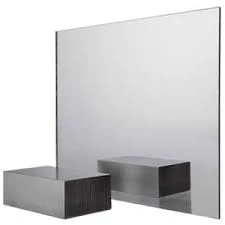

Heat Reflective Glass A Gateway to Energy Efficiency
In the modern world, where energy efficiency and sustainability are paramount, the construction and design industries are constantly exploring innovative materials that can help reduce energy consumption. One such material that has gained significant attention is heat reflective glass. This type of glass not only enhances the aesthetic appeal of buildings but also plays a vital role in energy conservation, making it an essential component in contemporary architectural design.
What is Heat Reflective Glass?
Heat reflective glass, also known as low-emissivity (Low-E) glass, is a type of glass that has been treated with a special coating designed to reflect heat from the sun. This coating can either be applied to the surface of the glass or be incorporated into the glass during manufacturing. The primary function of heat reflective glass is to minimize the amount of solar radiation that enters a building while allowing visible light to pass through. This remarkable feature drastically reduces the need for air conditioning in warmer climates, leading to lower energy bills and a more comfortable indoor environment.
Benefits of Heat Reflective Glass
1. Energy Efficiency One of the primary advantages of heat reflective glass is its ability to enhance energy efficiency in buildings. By reflecting solar heat, this type of glass helps maintain a consistent indoor temperature. In the summer, it keeps the interior cooler, which reduces the reliance on air conditioning. In colder months, it retains heat, minimizing the need for heating systems.
2. UV Protection Heat reflective glass also offers protection against harmful ultraviolet (UV) rays. Prolonged exposure to UV radiation can lead to skin cancer and other health issues, as well as damaging indoor furnishings, artwork, and flooring. The UV-blocking properties of heat reflective glass help mitigate these risks, contributing to a safer indoor environment.
3. Glare Reduction For buildings exposed to direct sunlight, glare can be a significant issue. Heat reflective glass effectively reduces glare, enhancing the comfort and productivity of occupants. This is particularly beneficial in office environments, where excessive brightness can hinder concentration and work efficiency.

4. Aesthetic Appeal Available in various colors and tints, heat reflective glass can be customized to suit any architectural style. Its sleek appearance can elevate the design of a building, making it not only functional but also visually appealing. This versatility allows architects and designers to create stunning facades that stand out while providing critical energy-saving benefits.
5. Environmental Impact By reducing energy consumption, heat reflective glass contributes to a lower carbon footprint. Buildings that utilize this advanced glass technology are not only more sustainable but can also contribute to the goals of green building certification systems, such as LEED (Leadership in Energy and Environmental Design). As more developers seek to create environmentally friendly structures, heat reflective glass plays a crucial role.
Applications in Architecture
Heat reflective glass is an ideal choice for a wide range of architectural applications. Office buildings, hospitals, schools, and residential properties can all benefit from its energy-saving attributes. In large commercial buildings, for example, where window size can lead to significant heat gain, the use of heat reflective glass becomes even more critical. It ensures that vast amounts of natural light are utilized effectively without the corresponding increase in temperature.
Moreover, during the design phase of new buildings, incorporating heat reflective glass can lead to more efficient heating and cooling system designs, resulting in lower operational costs over time. Retrofit projects can also implement heat reflective glass to upgrade older structures, providing a cost-effective solution for modernizing energy efficiency.
Conclusion
In conclusion, heat reflective glass embodies the future of building materials in our quest for energy efficiency and sustainability. Its myriad benefits – from energy conservation and glare reduction to enhanced aesthetics – make it a valuable choice for modern architecture. As we continue to seek innovative ways to combat climate change and reduce energy consumption, heat reflective glass stands out as a beacon of hope, leading the way toward a greener, more sustainable built environment. Investing in such technology is not just beneficial today; it is a commitment to future generations and the planet we inhabit.